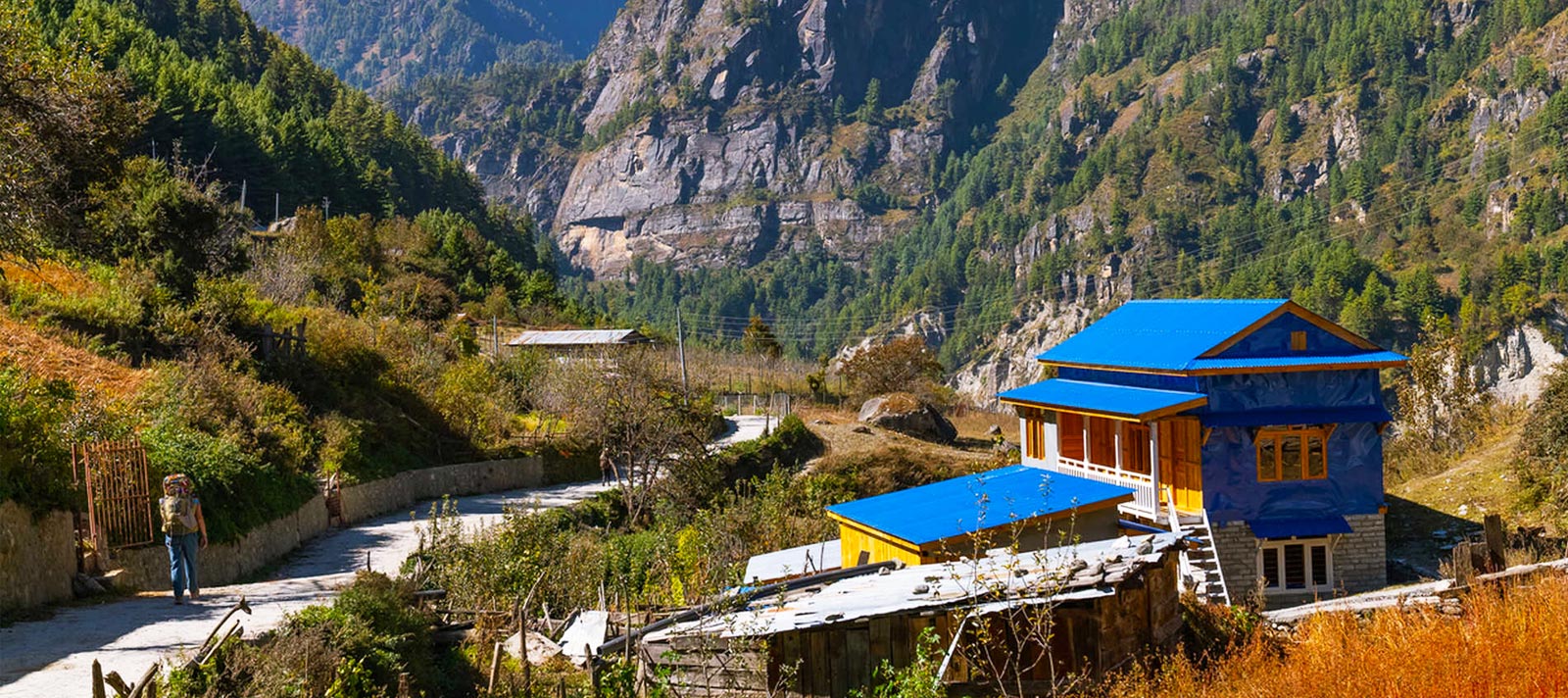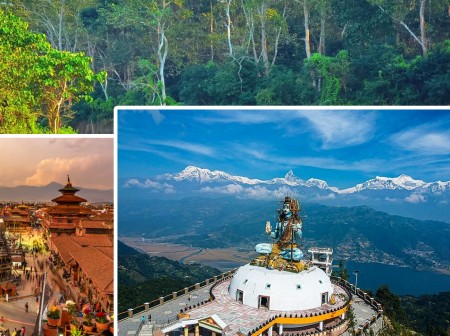
Teahouse Trekking in Nepal Guide
- soleencounters
What is Teahouse Trekking in Nepal?
Teahouse trekking is one of the most rewarding and accessible ways to experience the Himalayan trails of Nepal. Unlike wilderness camping, teahouse trekking allows trekkers to stay in small, locally-run lodges that provide basic lodging and hot meals throughout the journey. These teahouses are the backbone of trekking in regions like Everest, Annapurna, Langtang, and Manaslu, offering a unique cultural immersion and much-needed comfort at the end of each hiking day.
Table of Contents
At Sole Encounters Trekking Pvt. Ltd., we design our guided adventures to include carefully selected teahouses that prioritize cleanliness, hospitality, and local authenticity. This guide will walk you through what to expect when staying in teahouses in Nepal—from room standards and facilities to menus, mealtime culture, and local insights.
Whether you’re preparing for the classic Everest Base Camp Trek or exploring hidden gems like the Manaslu Circuit Trek, here’s everything you need to know.
What is a Teahouse?
A teahouse in Nepal refers to a locally operated lodge that provides trekkers with:
-
A basic room (usually twin-sharing)
-
Home-cooked meals
-
Common dining area for social interaction and warmth
-
Access to drinking water, hot showers, and charging outlets (usually at extra cost)
Originally developed as family-run rest stops, teahouses have evolved into the go-to accommodation model for Nepal’s popular trekking routes. They vary in standard from very basic wooden huts in remote areas to well-managed lodges with modern amenities in more established villages.
Where You’ll Find Teahouses in Nepal
Teahouse trekking is well-established in several regions across Nepal. These include:
-
Everest Region (Sagarmatha National Park): Well-developed lodges, especially along the Everest Base Camp Trek
-
Annapurna Region: High-quality teahouses along routes like Annapurna Base Camp, Annapurna Circuit, and Ghorepani Poon Hill
-
Langtang Valley Trek: Rebuilt after the 2015 earthquake with decent amenities
-
Manaslu Circuit Trek: Increasingly developed but more rustic the higher you go
-
Mardi Himal Trek: Limited but growing infrastructure, particularly at higher camps
Some remote treks like Kanchenjunga Base Camp or Upper Dolpo Trek may require a combination of teahouse and camping due to limited availability.
What to Expect from Teahouse Accommodation
Room Setup
Rooms in teahouses are typically:
-
Twin beds with foam mattresses, pillows, and blankets
-
Shared walls and minimal insulation
-
Simple furnishings—no heating, carpets, or ensuite bathrooms in most places
In colder regions, temperatures inside the room can drop significantly at night. Bringing a four-season sleeping bag is highly recommended. Our guides at Sole Encounters ensure you have this covered before departure.
Toilets and Showers
-
Toilets: Ranges from squat-style to Western-style, often shared
-
Hot Showers: Available in most villages at an extra cost (solar or gas-heated)
-
Water Supply: You can refill bottles with boiled or filtered water for a small fee
Electricity and Charging
-
Charging outlets are usually located in the dining hall
-
Charging fees may apply, especially at higher elevations
-
Power outages are common, so bring a power bank and headlamp
Cleanliness and Safety
While teahouses are basic, they are generally clean and safe. At Sole Encounters, we only book teahouses that meet our quality standards. Our guides inspect and coordinate logistics to ensure you get the best available lodging on each route.
What Meals Are Served in Teahouses?
Nepali teahouses provide surprisingly diverse menus given the remote locations. Meals are usually prepared fresh using local ingredients and served in communal dining areas.
Common Foods on the Trail:
-
Dal Bhat: Nepal’s national dish—lentil soup, rice, and vegetables. Refillable, nutritious, and the best fuel for trekkers.
-
Vegetable Noodles and Fried Rice: Easy to digest and filling.
-
Momos: Tibetan-style dumplings available in vegetarian or meat options.
-
Chapati with Curry: A lighter meal option for breakfast or dinner.
-
Tibetan Bread and Pancakes: Popular breakfast items with jam, honey, or eggs.
-
Soup Varieties: Garlic soup is particularly recommended at high altitudes.
Beverages Available:
-
Black tea, milk tea, and ginger tea
-
Instant coffee or Nescafé
-
Hot lemon with honey (great for hydration)
-
Boiled drinking water (sold per liter or refill)
Alcoholic drinks are discouraged at altitude due to dehydration and risk of AMS.
Food Hygiene and Quality
Food in teahouses is generally safe. Stick to freshly cooked, vegetarian meals, especially at higher elevations. Our guides assist in meal selection and ensure dietary preferences (vegan, gluten-free, etc.) are communicated properly to the kitchen.
Sample Daily Meal Routine
Morning:
-
Tea or coffee
-
Pancake, porridge, or eggs with toast
Midday (Lunch stop):
-
Dal Bhat or noodles with vegetables
-
Tea or water refill
Evening (after reaching teahouse):
-
Soup starter
-
Dal Bhat or fried rice/noodles
-
Herbal tea
Meals are communal, creating a warm, social atmosphere that is a hallmark of the teahouse trekking experience.
Advantages of Teahouse Trekking in Nepal
-
Cultural immersion: Stay in local homes and interact with host families.
-
No need to carry camping gear: Lighter backpacks, especially with porter support.
-
Hot meals daily: No need for self-cooking or rationing.
-
Safer and more flexible: Easy to adjust plans or stop earlier if needed.
-
Eco-friendly travel: Support local communities directly through your stay.
Our curated Trekking in Nepal programs are built around responsible teahouse trekking—supporting local livelihoods while ensuring quality standards.
Best Time for Teahouse Trekking
The best seasons for teahouse trekking are:
-
Spring (March to May): Warm weather, rhododendron blooms, longer days.
-
Autumn (September to November): Clear skies, excellent mountain visibility, cool temperatures.
Winter trekking is possible at lower elevations, but many teahouses at high altitudes may close. Monsoon season (June–August) brings rain, landslides, and leeches—teahouse trekking is not recommended during this period, except in rain-shadow regions like Upper Mustang.
Tips for a Comfortable Teahouse Trek
-
Bring your own sleeping bag and liner
-
Use a headlamp for night trips to the toilet
-
Pack toilet paper, sanitizer, and quick-dry towel
-
Charge devices during daylight hours
-
Eat vegetarian at altitude for better digestion
-
Carry local currency (small denominations) for extra charges like hot showers or snacks
We provide detailed packing lists and pre-trip briefings to all our guests.
Conclusion: Comfort Meets Culture in Teahouse Trekking
Teahouse trekking in Nepal offers the perfect balance between adventure and comfort, especially for those who want to explore the Himalayas without the burden of carrying tents and supplies. Whether you're walking through Sherpa villages in the Everest region, terraced hills in Annapurna, or Buddhist settlements in Manaslu, teahouses bring you closer to the heart of Nepalese hospitality.
At Sole Encounters Trekking Pvt. Ltd., we ensure every aspect of your teahouse trek is carefully planned—from choosing the best lodges to arranging warm meals and knowledgeable guides.
Ready to experience the real Nepal? Explore our full range of Trekking in Nepal itineraries or contact us to customize your teahouse trekking adventure.
Recent Posts
.jpg)
3rd Jul, 2025
.jpg)
4th Jul, 2025
.jpg)
4th Jul, 2025
.jpg)
7th Jul, 2025
.jpg)
8th Jul, 2025
.jpg)
8th Jul, 2025
.jpg)
8th Jul, 2025

10th Jul, 2025








